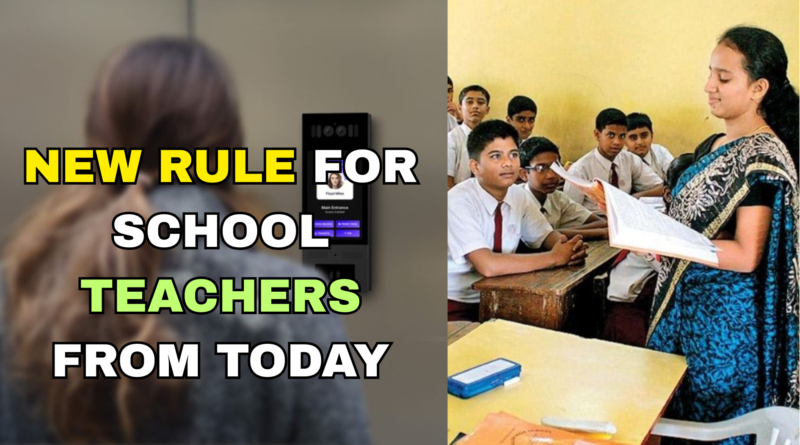NEW RULE FOR SCHOOL TEACHERS FROM TODAY
In a significant move aimed at improving accountability and discipline in government-run schools, the Telangana state government has decided to implement a facial recognition attendance system for teachers. This initiative seeks to tackle long-standing issues such as late arrivals, early departures, and instances of proxy attendance among school staff. The decision reflects the state’s growing emphasis on digital governance and technological interventions in public services.
The new system is expected to be rolled out in a phased manner, beginning August 1, 2025, in select schools across the state. Within a week, the program will be extended to all government schools. According to education department officials, this pilot phase will help identify any technical or procedural challenges before it becomes mandatory statewide.
Under the new system, teachers will be required to mark their attendance twice a day once in the morning upon arrival and once in the evening before departure. This process must take place within school premises using facial recognition devices that are directly linked to the central education management portal. This will not only log presence but also capture location and time in real time.
The state has already implemented facial recognition for tracking student attendance in many schools, and initial results have been encouraging. Officials believe that extending the same technology to teaching staff will significantly increase transparency and help improve the overall learning environment. Parents have welcomed the move, saying it could ensure better teaching quality by enforcing punctuality and presence.
This initiative is part of a broader strategy to reform the state’s education system. Over the years, various reports and inspections have highlighted concerns about irregular teacher attendance in rural and semi-urban areas. Some cases even reported ghost employees teachers who draw salaries but rarely attend school. The new attendance mechanism is designed to eliminate such malpractice.
The government has assured that data privacy measures will be strictly followed. Teachers’ biometric data will be encrypted and stored securely, and only authorized officials will have access to the information. Training sessions will also be conducted for school heads and teachers to ensure smooth onboarding and clarity about how the system works.
Reactions from teachers have been mixed. While some appreciate the effort to bring professionalism into the sector, others feel it could be too rigid, particularly in schools with poor internet connectivity or technical infrastructure. The education department has responded by promising backup mechanisms and support in remote areas where connectivity issues may arise.
In addition to monitoring punctuality, the system may also serve as a useful tool for administrative planning. Accurate, real-time data on staff attendance can help in the deployment of substitute teachers, performance evaluations, and resource allocation. Over time, this could lead to improvements in classroom effectiveness and student outcomes.
The Telangana government’s use of facial recognition in education marks a step forward in blending technology with governance. By setting an example in educational reform, Telangana is positioning itself as a progressive state in terms of digital transformation in public services. If successful, the model may be adopted by other states seeking to revamp their education systems.




